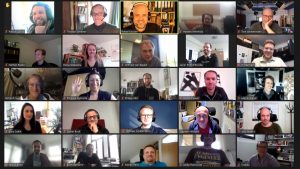
At this month’s AES South German Section Research Colloquium, three experts in the field of object-based audio applications, both consumer and professional audio, discussed their experiences from different perspectives: loudspeaker system design, live show control and studio post-production.
Starting from the main characteristics of a traditional mono/stereo playback and the history of sound reinforcement, the change of mixing channel-based audio content to an object-based audio approach was presented. It is accomplished by adding meta data to the audio, that allows to place the sound object within the virtual space. A rendering engine processes the content to improve the psychoacoustic perception for every size of the loudspeaker system. For professional audio applications, loudspeaker system designs were presented that highlighted the basic setup and pointed out a new way of communication between system designers and content creators to reach the goal of good spatial sound reproduction.
Another important topic was the situation of the current object-based audio formats, their standardisation and available software solutions. Especially when it comes to the final format to be implemented, some important decisions have to be made at the beginning of the production in order to remain compatible during the process.
We would like to thank the experts for presenting their interesting work and viewpoints in the field of spatial audio. A very nice discussion opened up on a topic that will be taken up in further research colloquia.
A video of the presentation is available on YouTube.
